In this article, we delve into the intriguing question of ‘Do spiders drink water?’ Exploring their unique biology and behavior, we uncover the surprising ways these eight-legged creatures quench their thirst.
About Spiders
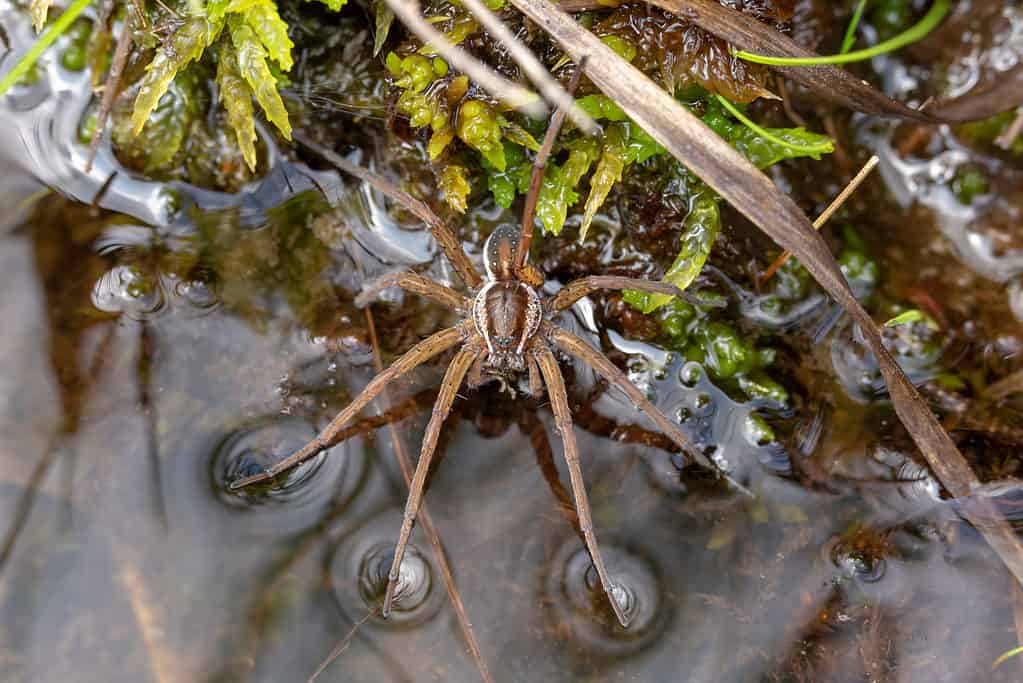
Do spiders drink water? Yes, they do!
©iStock.com/Jordon Sharp
Spiders are fascinating creatures known for their highly organized and efficient webs. They live all over the world in many different habitats and can vary greatly in size and color. Spiders have a unique body structure, with two main parts: the cephalothorax and the abdomen. They have eight legs covered in tiny hairs that help them to sense their environment. Spiders also have two eyes, but some have more.
Spiders spin webs to catch their prey. They make their webs out of strong, sticky silk that they use to capture their food. The web also helps the spider to sense vibrations in its environment, alerting it to potential prey or danger. Spiders also use their webs to wrap up their prey and immobilize it.
Spiders play an important role in the environment by helping to keep insect populations in check. They also provide food for other animals, such as birds and lizards. Despite their often scary reputation, spiders are actually beneficial to humans as well since they eat insects that can be pests.
Do Spiders Drink Water?
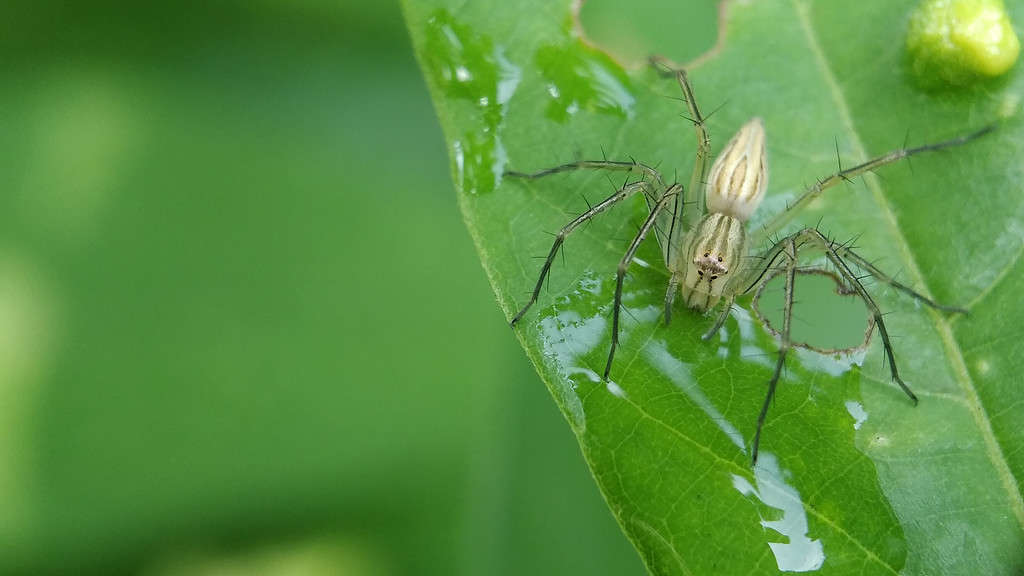
In fact, all types of spiders drink water.
©Husain Arifin/iStock via Getty Images
Yes, spiders do drink water. Spiders primarily get their water from the food they eat, such as insects, but they do drink water if it is available.
The main way that spiders get their liquid is from the food they consume. They will also make use of their webs, which act as a kind of makeshift water catcher. If there are any droplets of water, including those on windows or leaves, spiders will drink them. When looking for an actual source of water, spiders prefer wide, shallow areas that they can safely stick their head into without being submerged. Puddles and pools of water are ideal for them. Lastly, pet spiders kept in captivity will drink from the water bowl provided for them.
How Do Spiders Drink Water?

Spiders can drink water drops that form on their webs to stay hydrated.
©SakSa/Shutterstock.com
Unlike humans, spiders don’t have conventional mouths. Instead, they have a pair of body parts called chelicerae, which resemble fangs or jaws. When submerged in water, these chelicerae are able to produce a suctioning motion that allows the spider to drink, similar to how we sip through straws. They suck the water into the mouth, which is right behind the chelicerae. It takes spiders a long time to drink this way, and you can often spot them partially submerged in water for many minutes.
How Often Do Spiders Drink Water?
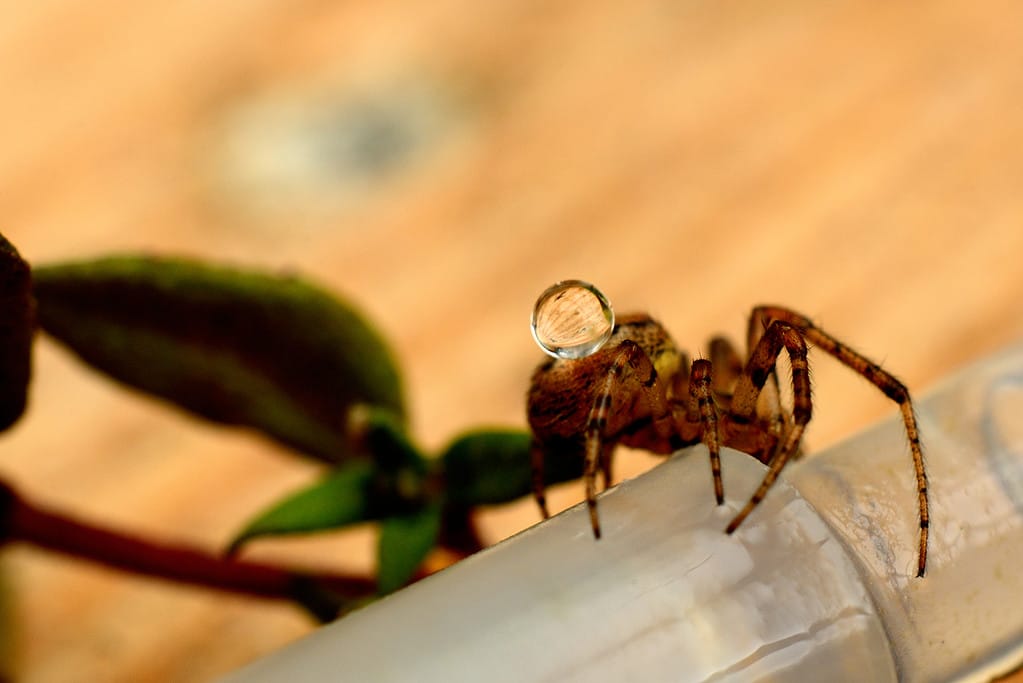
Spiders can drink water directly from pools and puddles.
©Kim_white/iStock via Getty Images
It is hard to tell how long spiders can remain without water since it depends on various factors, like the kind of habitat they live in and the species they belong to. Brown recluse spiders can survive up to ten months without water, while tarantulas can only manage a few weeks without it. Even the most water-dependent spider species can go much longer without it than a human being.
The frequency at which a spider requires water varies depending on the type and environment. Generally, spiders can survive for weeks or even months without H2O, yet most species require water every couple of days to remain healthy. If you have a pet spider, keep a water bowl nearby and replenish it frequently in order for the spider to have access to hydration.
Do Spiders Drink Water Through Their Fangs?

Spiders do drink water by suction but not through their chelicerae (fangs).
©Sari ONeal/Shutterstock.com
Contrary to popular belief, spiders do not take in water through their fangs. These fangs are scientifically referred to as chelicerae, and they play an important role in the drinking process for spiders. The chelicerae and the muscles around the spider’s mouth work together to create a suction that brings water up to the spider’s real mouth, which is hidden behind the fangs. Therefore, while chelicerae are necessary for spiders to drink, they do not drink directly from them.
What Other Fluids Do Spiders Drink?

Spiders don’t have traditional jaws, teeth, or tongues, but somehow, spiders still manage to drink water.
©Anne Chiranya/Shutterstock.com
Actually, spiders consume almost entirely liquids and lack the proper mouthparts to chew their food. Instead, they inject venom into their prey to break it down before drinking it in like a liquid. They also rely heavily on hydraulics to move around, using muscles to contract their legs but pushing fluids into the cavities to extend them. If a spider doesn’t have enough water, it won’t be able to extend its legs, leading to the characteristic curled-up posture when a spider dies. If you see a spider in this condition in your house, it may just be dehydrated from the lack of water available indoors. Try giving it a few drops of water, and it may recover.
Do Spiders Come Up Through Drains?

Spiders can drink water by climbing into your sink or shower and having a sip.
©Steven Vona/Shutterstock.com
People are often uncomfortable with the idea that there are spiders living in their homes, so they may think that the spiders come in through their drains. However, there is no evidence to support this. Modern plumbing systems have a liquid-filled sediment trap which prevents spiders from getting through. Spiders, however, are still drawn to any water they may find in sinks or tubs and try to get to it, often by climbing down the wall. But once they reach the slippery porcelain surface of the basin, they are unable to climb back out without assistance from a human.
Do Spiders Suck the Juices Out of Their Prey?
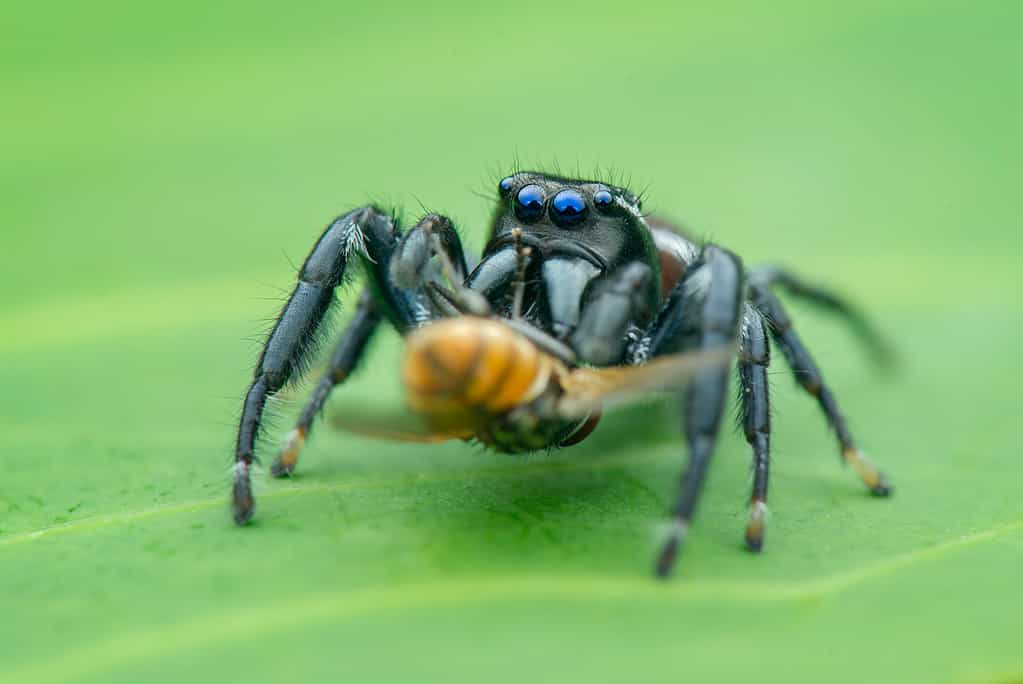
Spiders drink water and get fluids from the prey that they consume.
©DWI YULIANTO/Shutterstock.com
This belief that spiders suck the fluids out of their prey is common, even amongst some scientists who haven’t researched the subject. However, this is simply not true. All spider species digest some semi-solid parts of their food, and it’s quite interesting to observe. Most spiders liquefy their prey and then use suction to draw the liquid into their body.
If you watch a large orbweaving spider, you will witness the spider bite its prey, wrap it in silk, wait for it to expire, and then start to consume it. Initially, the spider will regurgitate digestive fluid over the prey to liquefy it. Afterward, the spider will munch on it using its “jaws” (chelicerae). The fluid will be sucked back into its mouth with some of the liquefied “meat” from the insect. This method is repeated until the spider has digested and ingested all but the indigestible hard parts. The remains of the meal are left in a small pellet form.
Non-orbweaver spiders may consume the body of their prey, but they will often discard the crunchy wings or legs. Those spiders with tiny chelicerae (jaws), like cobweb weavers or crab spiders, puncture the prey and regurgitate digestive fluid into its body. They then eat the liquefied innards, leaving a concave shell with the muscles and internal organs digested and drained.
Do Spiders Sleep?
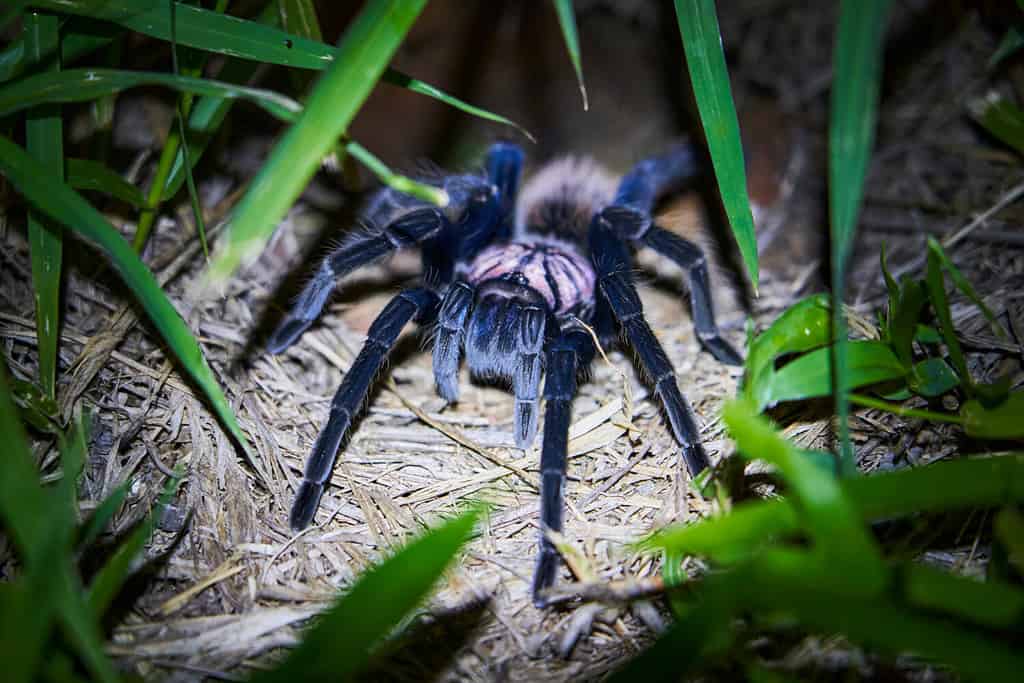
Spiders have periods of rest and periods of intense activity, not traditional sleep like humans.
©Jens Otte/Shutterstock.com
Rather than sleeping in the same fashion as humans, spiders have daily cycles of activity and rest. Since they do not have eyelids, they are unable to close their eyes, yet they still reduce their activity levels and metabolism in order to store energy. This is especially helpful for web-building spiders who may go extended amounts of time without a meal.
It is possible to monitor the bodily functions of spiders by attaching small sensors to them. Their internal clocks, called circadian rhythms, regulate when spiders rest and how much they rest, and this can vary depending on the type of spider and its habitat. Research has shown that all spiders experience a period of decreased activity when they rest.
There are over 50,000 different species of spiders, each with their own unique lifestyles and hunting methods. Many web-building spiders are active throughout the night while humans sleep, and some even build a new web daily, like the orb weaver. Other spiders, like jumping spiders, rely on their vision to catch prey and tend to be active during the day.
The photo featured at the top of this post is © Kim_white/iStock via Getty Images
Thank you for reading! Have some feedback for us? Contact the AZ Animals editorial team.







